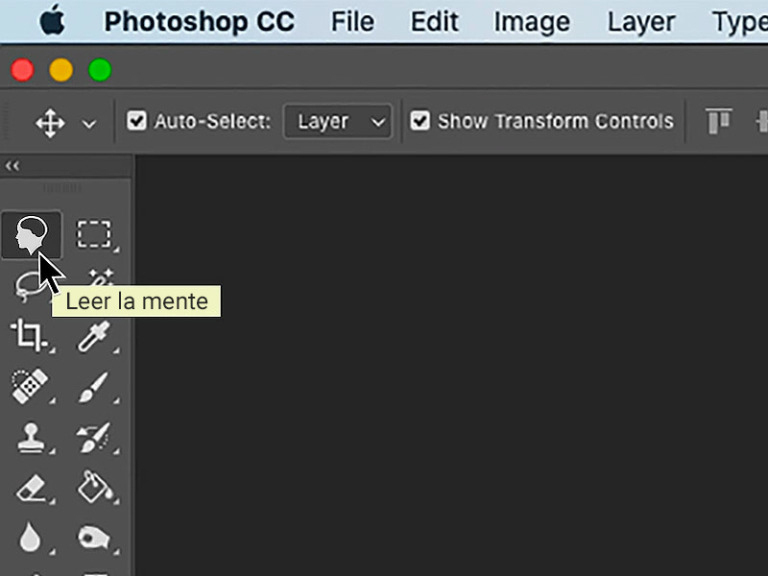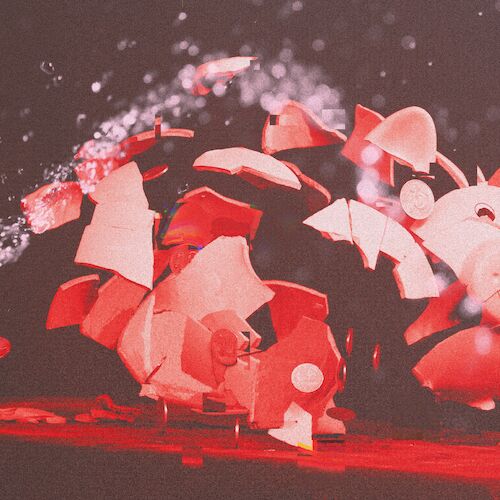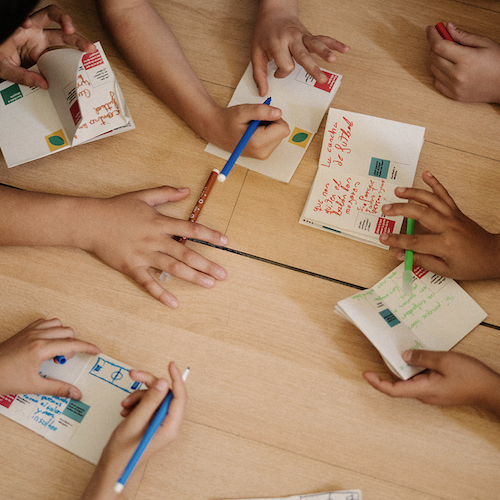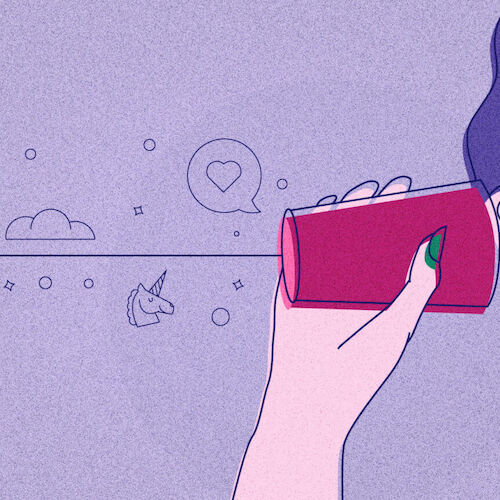How to work with graphic designers
Client:
Laintersección.net
Research tactics and methodologies:
Year:
2021
This text is the second part of a series published on LaIntersección.net, with the aim of facilitating collaboration between designers and people dedicated to social communication. If you haven't read the first part yet, it's here: "What you should consider before starting to work with design professionals".
Once we are clear that we want to work with a design professional, we need to consider that a designer is, above all, a person. When a person is asked to do a task or even takes the initiative to perform it, they must define what they are going to do and for what purpose. Perhaps this is not a sophisticated process, it can be as everyday as deciding to go to the market to buy tomatoes to eat on toast. Exactly the same happens when we have a graphic designer: they need to know what and for what. The challenge here is that design, specifically graphic design, has processes that may seem unintuitive to other areas. So next, we are going to see some suggestions for finding a design professional, how to make initial contact, and some tools to understand each other better.
To whom do I contact?
To find a graphic designer, you can search the internet, ask colleagues or friends if they know someone, or even post it on your social networks. The initial point to consider when looking for a graphic designer is how aligned they are with your project. Basically, it is about knowing how much we share values and culture. One way to get to know them better is to review their previous work, which they will typically have compiled in a portfolio. If you can't easily find it on their website or social media, contact them to ask for it.
In a graphic design portfolio, you can usually see the type of work that the person is most interested in. You can also check if they have been involved in social projects to get to know their interests. In addition to values and culture, consider the basic needs of your project. For example, if you have identified that you require video editing and illustration tools, make sure their portfolio displays works that include them.
If what you need is reflected in their portfolio, congratulations! That person is a great candidate for your project. You can ask for a meeting. Otherwise, it is best to continue your search.
How to evaluate if a portfolio is good
One key is to question our own preconceived ideas. Many times we see a design and decide if we like it or not aesthetically. But the suitability of the design depends on its functionality, as we mentioned before. It may be the case that you don't like the design of a poster, but does it work? Perhaps it is not intended for you, perhaps it wants to communicate with a completely different group than the one you belong to, perhaps it is intentionally designed to make you uncomfortable (and thus react on social media and contribute to making it go viral), perhaps it has an aesthetic that seeks to appear cheap or socially responsible, or any other attraction factor. In this sense, we always have to ask ourselves: does it work for the purpose it was made for?
"People will forget what you said, people will forget what you did, but people will never forget how you made them feel," said Maya Angelou once. This is the basis of the functionality - and even the beauty - of graphic design. Both perspectives, the objectives for which they have been designed and how they can make the people they are directed to feel, can be useful in evaluating the works included in a portfolio.
What to ask a designer in an interview?
After reviewing portfolios, there may be more than one interesting profile. The usual thing is to arrange an interview to get to know each other better and discuss the project. At this stage, it will be important to be able to explain the project in general, as well as the estimated dates and what is expected specifically from the designer. You may ask them to join from the creation of the strategy or to develop specific graphic material that has already been determined in your organization.
On the other hand, asking about their interests, their specialty, or area of expertise can also be crucial for them to tell you how they think it would be best to approach the project from their perspective. The world of graphic design is very broad, so it is easy to find more than one way to solve a project.
Remember to clearly convey the needs of the project: from the timelines and budget to how you expect them to be involved and the materials or results you expect to obtain. The main idea here is that you can reach an agreement on the best alternative to achieve the objectives you have set.
What can I ask candidates before deciding which one to work with?
There is an unethical practice: asking several designers to create materials to choose from. Design contests lead to precarity because some of the people who invest time and effort will not receive anything in return. We hope you opt for a better option: requesting a general work proposal.
To request the work proposal, you need to tell them about your project, explain the strategy, define the timelines, and clarify what you expect to receive from this collaboration. The designers who want to work with you will return a work proposal, i.e., a document that will include a schedule with review dates, delivery times, the total time to execute the project, a budget, the inputs or materials that are expected from your side, and all the information they deem pertinent. When you receive the proposal, of course, you can make suggestions to reach an agreement.
Clear briefings, functional designs
Once you have chosen the person you are going to work with, you need to tell them in more detail what you want. It's time to do the briefing. A briefing is nothing more than a precise document about the project and the creative tasks. It is usually prepared by the task or project requester. If it is the first time you are going to work together or if it is a complex order, it is ideal to explain this document in a joint meeting. There, doubts will surely arise, and ideas, suggestions, or updates can be integrated by the designer (or designers or creative team). Moreover, they may want to carry out a counter-briefing, a new version of the document, as a proposal to integrate their creative perspective into the project. The final document reflects the agreement reached.
From our role, we must be concerned and occupied in defining as clearly and concisely as possible what and why. In this way, the designer can propose a how with confidence. In addition, the briefing will serve us to define the achievable goal, what we commit to on our part (input delivery, revisions, approvals, etc.), what the designer commits to, the deliverables, and the dates. Thus, the briefing will be our key tool to request any change and justify it based on what has been established. In other words, with clear briefings, we get functional designs. There is no other trick. And almost all the campaigns we see are designed using this fundamental tool in the creative process.
We know that this briefing and counter-briefing issue is central and gives us a lot to delve into, so in the next installment, we will go into more detail. We will include examples of briefings and templates that you can use for your projects. You can consult it by following this link.
Encontrar a alguien de diseño alineado con nuestro proyecto y trasladarle la información destacada es un reto más dentro del proyecto. Entendemos que la realidad es compleja, que muchas veces trabajamos a contrarreloj y con muchas puertas abiertas al mismo tiempo, pero descuidar esta parte se suele ver directamente reflejado en la comunicación de nuestro proyecto. Es normal que a veces nos cueste ser claros con el qué y para qué, pero la práctica y paciencia nos dan herramientas para mejorar cada vez.




